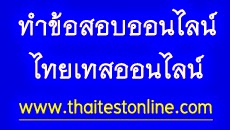แนะนำชุดข้อสอบ
EDUCATION RESEARCH | Test Home
Version Thaitestonline.com | Mobile
เพื่อนบ้านเว็บครูออฟ
1. สอบเข้ามหาวิทยาลัย สังคมศึกษา(2545) ชุดที่4
2. สถานการณ์โลกในปัจจุบัน
3. ความรอบรู้: สอบเกี่ยวกับความรู้ทั่วไป
4. สารและสมบัติของสาร2
Version Thaitestonline.com | Mobile
เพื่อนบ้านเว็บครูออฟ
